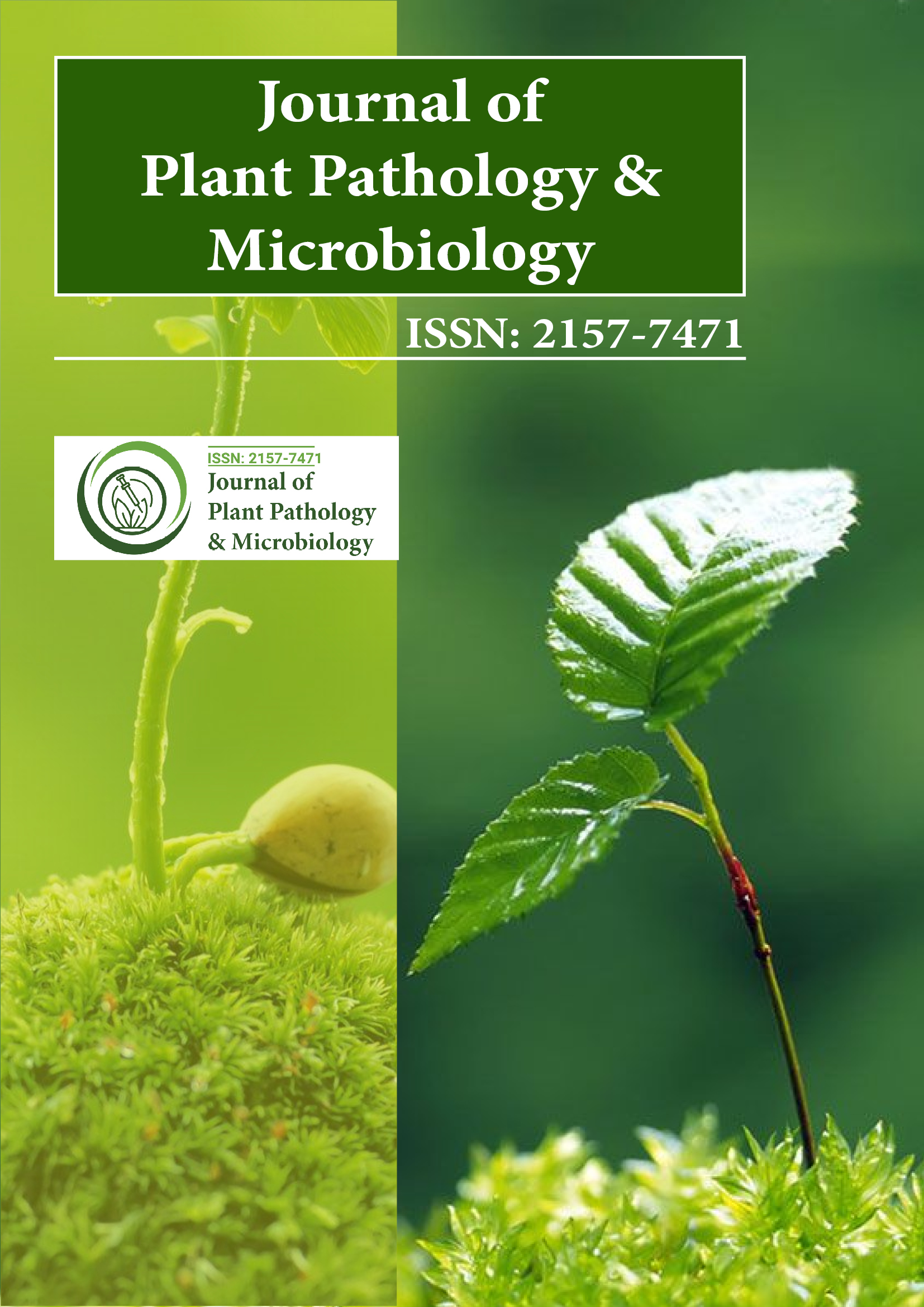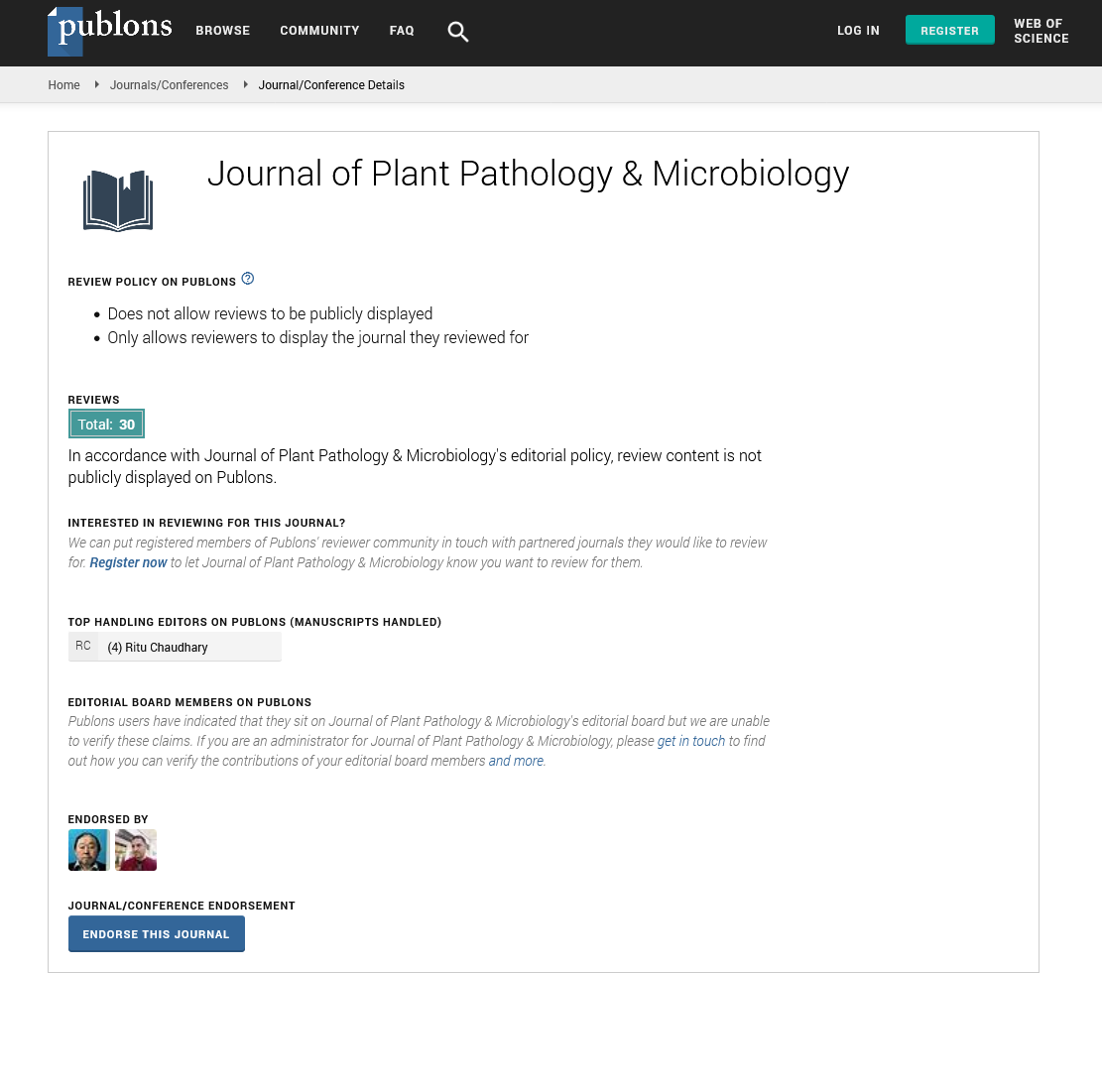Indexed In
- Open J Gate
- Genamics JournalSeek
- Academic Keys
- JournalTOCs
- CiteFactor
- Ulrich's Periodicals Directory
- Access to Global Online Research in Agriculture (AGORA)
- Electronic Journals Library
- Centre for Agriculture and Biosciences International (CABI)
- RefSeek
- Directory of Research Journal Indexing (DRJI)
- Hamdard University
- EBSCO A-Z
- OCLC- WorldCat
- Scholarsteer
- SWB online catalog
- Virtual Library of Biology (vifabio)
- Publons
- Geneva Foundation for Medical Education and Research
- Euro Pub
- Google Scholar
Useful Links
Share This Page
Journal Flyer

Open Access Journals
- Agri and Aquaculture
- Biochemistry
- Bioinformatics & Systems Biology
- Business & Management
- Chemistry
- Clinical Sciences
- Engineering
- Food & Nutrition
- General Science
- Genetics & Molecular Biology
- Immunology & Microbiology
- Medical Sciences
- Neuroscience & Psychology
- Nursing & Health Care
- Pharmaceutical Sciences
Commentary - (2024) Volume 15, Issue 3
The Role of Plant Immunity in Defending Against Emerging Pathogens
Received: 30-Aug-2024, Manuscript No. JPPM-24-28211; Editor assigned: 02-Sep-2024, Pre QC No. JPPM-24-28211 (PQ); Reviewed: 16-Sep-2024, QC No. JPPM-24-28211; Revised: 23-Sep-2024, Manuscript No. JPPM-24-28211 (R); Published: 30-Sep-2024, DOI: 10.35248/2157-7471.24.15.731
Description
Plant immunity plays a key role in defending plants from a wide range of pathogens including bacteria fungi viruses and nematodes. With the increasing emergence of new and more aggressive pathogens understanding and enhancing plant immune responses is more important than ever. Factors such as global trade climate change and the evolution of pathogen populations have contributed to the rise in new threats that plants face. As a result plants’ ability to recognize respond to and defend against these pathogens is essential for both the survival of natural ecosystems and the sustainability of agricultural production. Plants have evolved complex immune systems to detect and respond to pathogens though they do not have the specialized immune cells like animals. Instead they rely on a combination of physical barriers and molecular recognition mechanisms to fight off infections. The plant immune system is typically divided into two layers Pathogen-Associated Molecular Pattern (PAMP)-Triggered Immunity (PTI) and Effector-Triggered Immunity (ETI).
The first line of defense involves recognizing common features shared by many pathogens. These features known as PAMPs include molecules like flagellant chitin and lipopolysaccharides which are found in the cell walls or membranes of bacteria fungi and viruses. Plants have Pattern Recognition Receptors (PRRs) located on their cell surfaces that can detect these PAMPs. When PAMPs are recognized the plant activates a series of signaling pathways that initiate defense responses such as the production of Reactive Oxygen Species (ROS) the strengthening of cell walls and the synthesis of antimicrobial compounds. This broad defense response PTI provides protection against a variety of pathogens. Despite the broad protection provided by PTI some pathogens have developed mechanisms to overcome this defense system. These pathogens secrete effector proteins that interfere with the plant’s immune responses. In response plants have evolved a second layer of immunity known as Effector-Triggered Immunity (ETI). ETI is more specific and involves the recognition of particular pathogen effectors by plant Resistance (R) proteins. These R proteins are located inside the plant cell and can interact directly with pathogen effectors triggering a more localized and intense immune response.
ETI is often linked with the Hypersensitive Response (HR) where the cells at the infection site undergo programmed cell death to limit the pathogen’s spread. Even though plants possess these complex immune systems emerging pathogens present growing challenges to plant health. Emerging pathogens are those that have recently appeared or increased in frequency or severity. Climate change is a significant contributor to the spread of new and more virulent plant pathogens. Shifting temperature and precipitation patterns create conditions that favor the growth and spread of certain pathogens. For example higher temperatures may promote fungal and bacterial infections while altered rainfall patterns could increase the risk of waterborne pathogens. In addition to climate change global trade plays a major role in the movement of pathogens to new regions. When plant materials such as seeds soil or produce are traded between countries they can carry with them pathogens that plants in these new areas have never encountered. Without prior exposure to these pathogens the local plants often lack the immune responses necessary to defend themselves. This lack of immunity combined with the adaptability of pathogens means that emerging threats can cause significant damage to crops and ecosystems. Many emerging pathogens are capable of evolving rapidly which makes it difficult for plants to keep up with new threats. Some pathogens can acquire new virulence factors or develop resistance to the plant’s immune defense. For example they may alter the structure of their effector proteins to avoid detection by plant resistance proteins rendering the plant's immune system less effective. The evolution of pathogen resistance to plant immune responses is a major challenge for agriculture where the use of single-gene resistance strategies is common.
To counteract these challenges researchers are exploring various strategies to enhance plant immunity. One approach involves identifying and manipulating genes involved in immune responses. By enhancing the activity of specific immune receptors or signaling proteins it may be possible to boost the plant’s ability to detect and respond to pathogens more effectively. Another promising strategy is the use of biological control agents such as beneficial microbes to stimulate plant immune responses. These microbes can out\compete harmful pathogens or directly induce plant immunity. This approach known as Induced Systemic Resistance (ISR) primes the plant’s immune system making it more responsive to attacks. Breeding and genetic engineering efforts also aim to develop crops with stronger and more resilient immune systems. By introducing or enhancing specific resistance genes scientists can create plants that are better able to withstand infections. As pathogens continue to evolve and emerge understanding plant immunity and developing new strategies to strengthen it will be fundamental for ensuring food security and protecting ecosystems around the world.
Citation: Muller T (2024). The Role of Plant Immunity in Defending Against Emerging Pathogens. J Plant Pathol Microbiol. 15:731.
Copyright: © 2024 Muller T. This is an open access article distributed under the terms of the Creative Commons Attribution License, which permits unrestricted use, distribution, and reproduction in any medium, provided the original author and source are credited.

